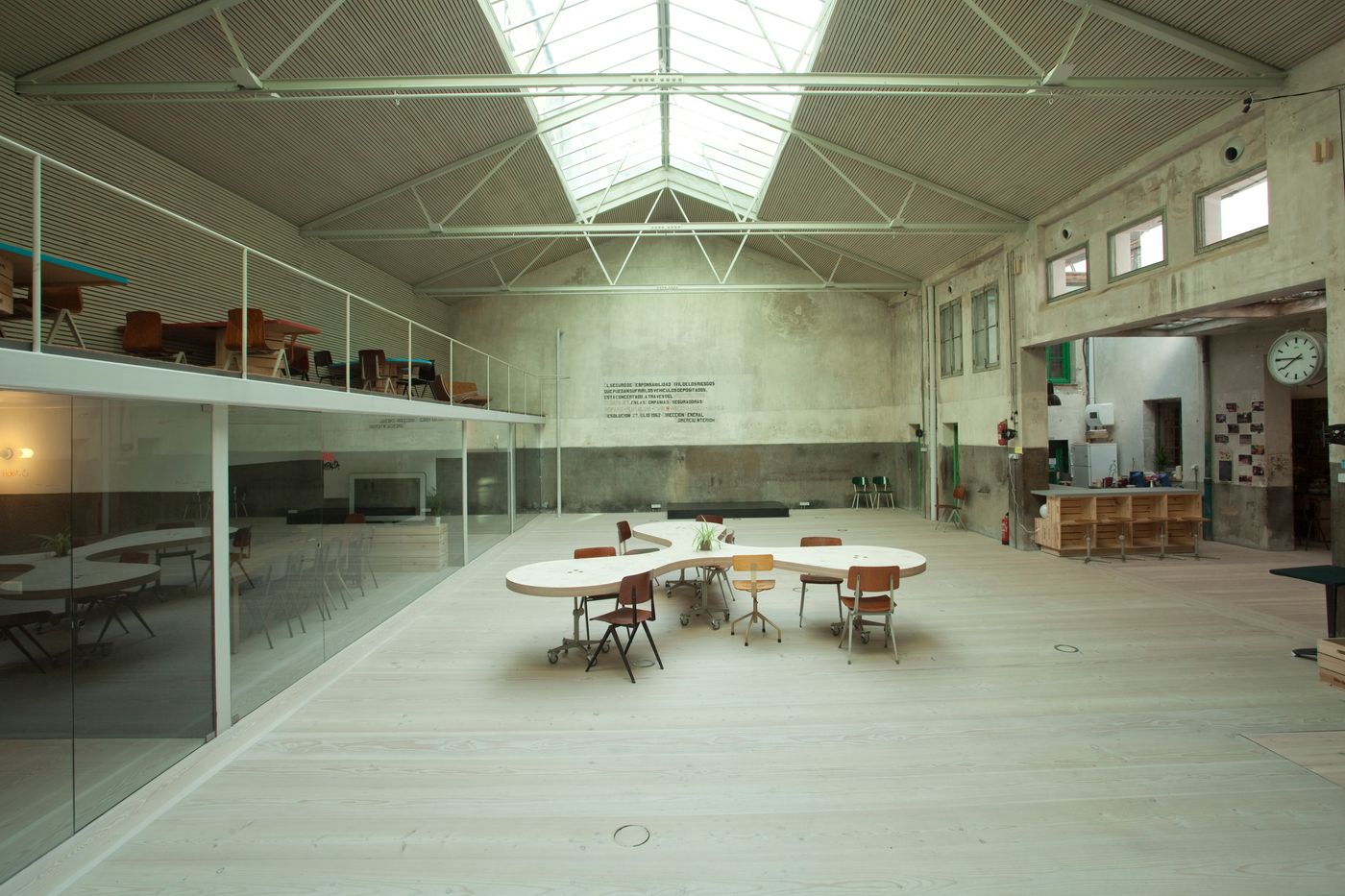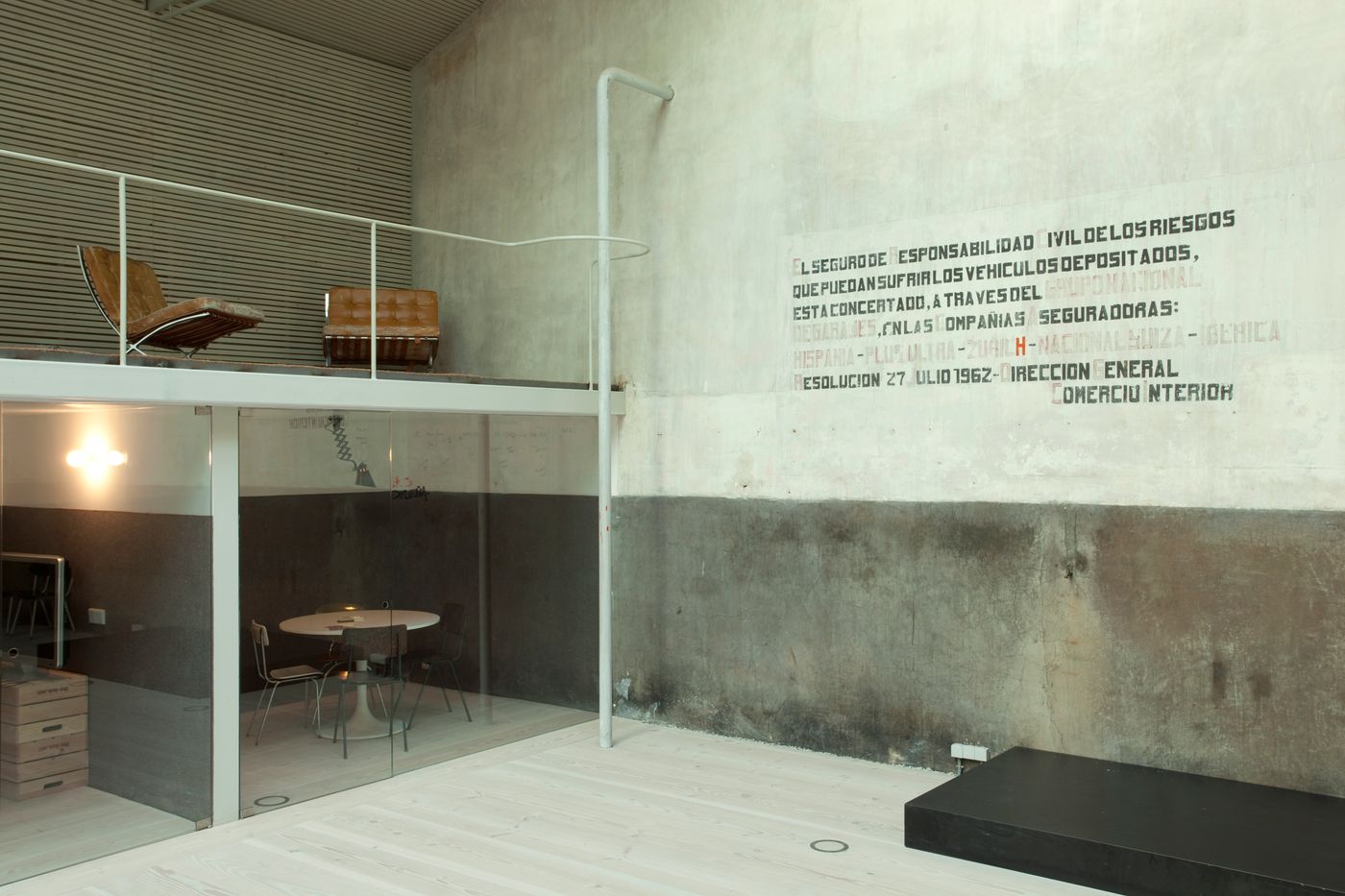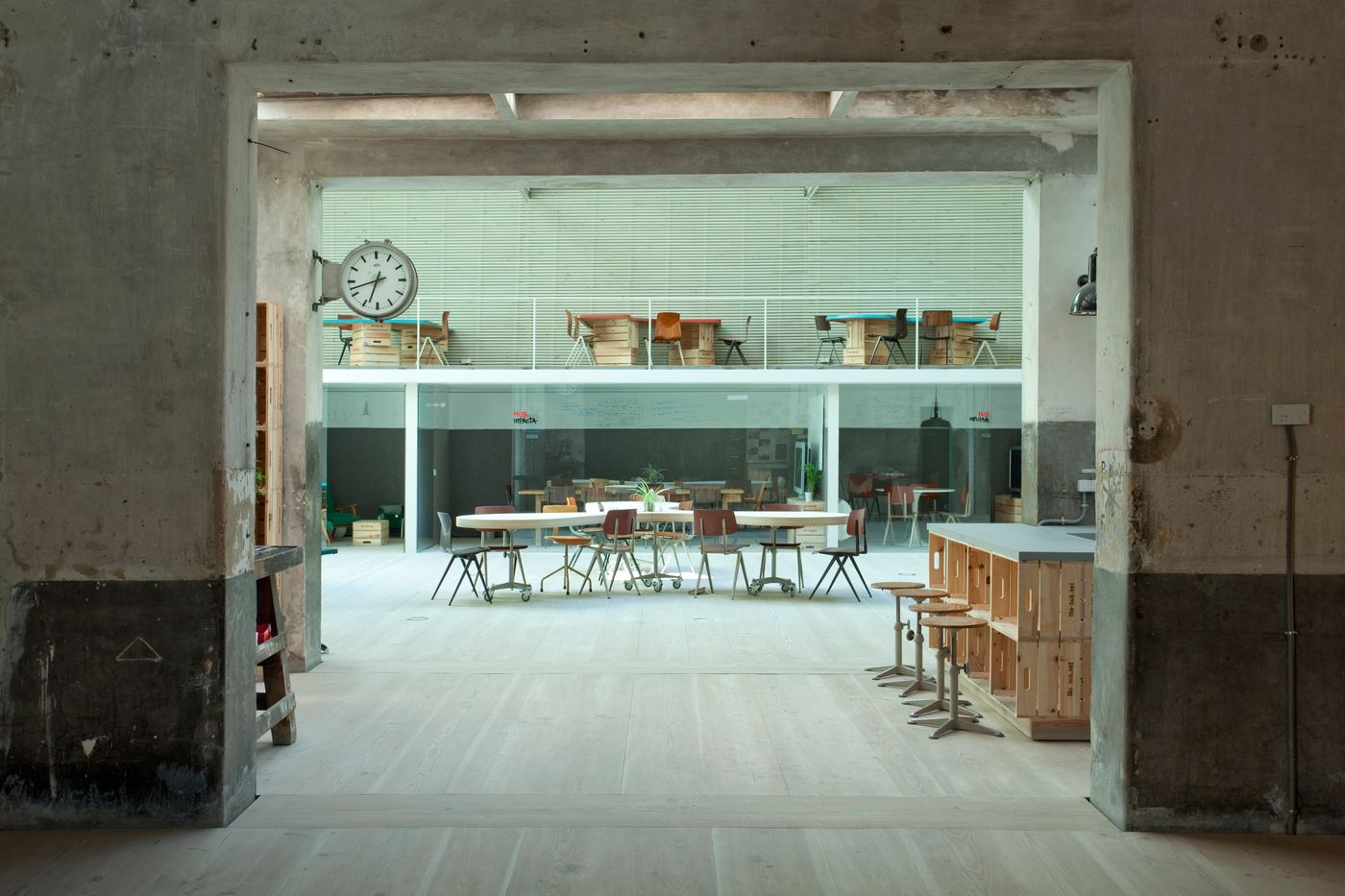
A Former Abandoned Garage is transformed into Madrid’s Hub Offices
Words by Marcia Argyriades
Location
Madrid, Spain
A Former Abandoned Garage is transformed into Madrid’s Hub Offices
Words by Marcia Argyriades
Madrid, Spain
Madrid, Spain
Location
An untouched garage from the 1940s, long left in poor condition, has been transformed by Churtichaga + Quadra-Salcedo Arquitectos (hereinafter referred to as CH+QS Architects) into timeshare offices for social entrepreneurs seeking to change the world. Madrid Hub Offices is strategically located between two major train stations, right where the city’s heart beats with energy. The architects embraced a deliberately raw, unpolished interior design approach — a style that is steadily gaining popularity. Instead of completely remodeling and modernizing the space, CH+QS Architects decided to leave much of it as it was.
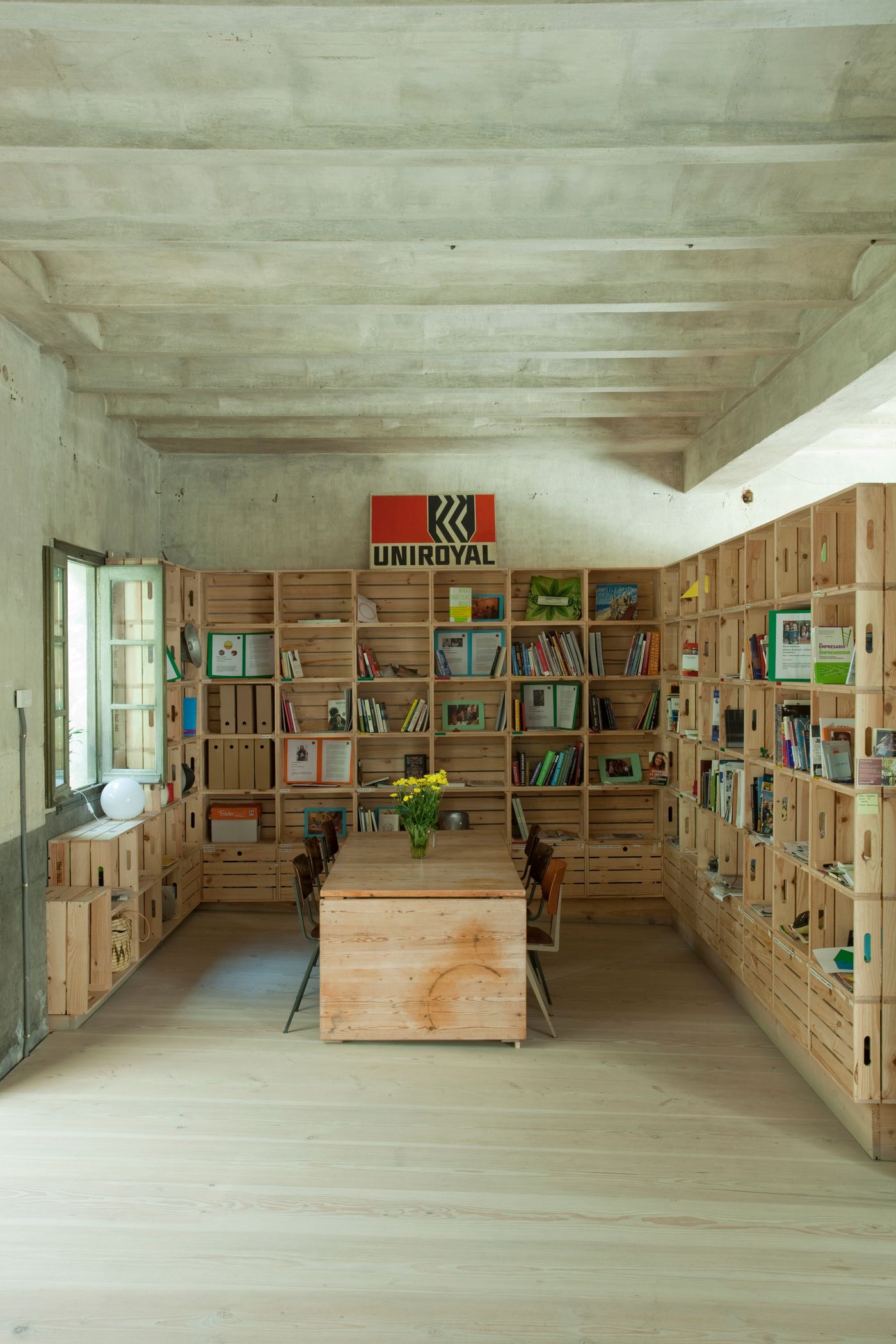
photo by Daniel Torrelló/ ayr+chitecture.

photo by Daniel Torrelló/ ayr+chitecture.
Leaving the paint peeled off the walls, yet sealing it with a protective resin to preserve its raw character, was one of the fundamental choices in this design. The existing engravings, scratches, and scars remain visible, telling the story of the space’s former life. The original structural shell of the garage — with its poured concrete walls and ceiling — set the aesthetic tone for the project.
CH+QS Architects questioned whether it was possible to maintain the layers of history within this space without obscuring or erasing them. With this work-in-progress canvas in mind, the team upgraded the space to ensure functionality and sustainability while respecting its authentic character.
The once-abandoned garage is now a sustainable, energy-efficient workspace, complete with a recycling program. In response to today’s environmental challenges, CH+QS Architects explored innovative techniques for restoring buildings in a more energy-conscious manner. The team insulated the interior shell and installed an underfloor heating and cooling system, an efficient method for maintaining indoor temperatures. The system is relatively inexpensive to install and distributes heat evenly across the space.
To soften the industrial feel, the cold concrete floor was replaced with large wooden planks, creating a warmer, more inviting atmosphere. Natural daylight floods the open-plan central workspace through a strategically placed skylight, reducing the need for artificial lighting during the day. This open-plan area serves as the primary collaboration and work zone, while private meeting, media, and workrooms have been constructed along the sides using steel-framed mezzanine structures. These side rooms are lined with recycled wool felt to enhance acoustics and provide privacy.
Sustainability extends to the furnishings as well. Almost all of the furniture has been recycled or repurposed, with many pieces donated by the hub’s owners, resulting in a charming, eclectic mix of vintage finds. Modular pieces were created from repurposed wooden fruit crates, cleverly designed to serve as stools, shelves, coffee tables, and even a ticket box and ladder. These adaptable crates function as “wildcards,” able to fill any furniture gaps as needed.
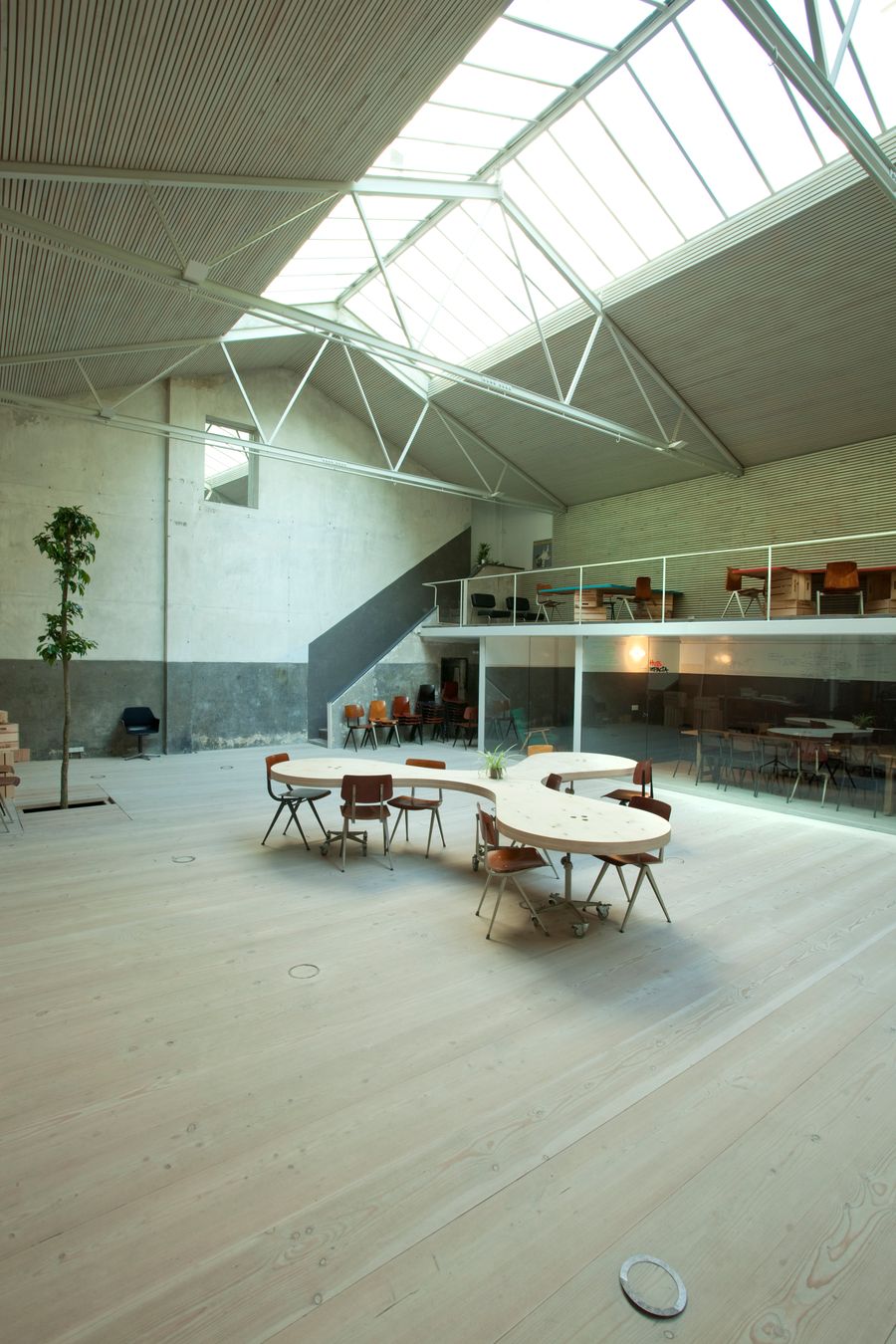
photo by Daniel Torrelló/ ayr+chitecture.
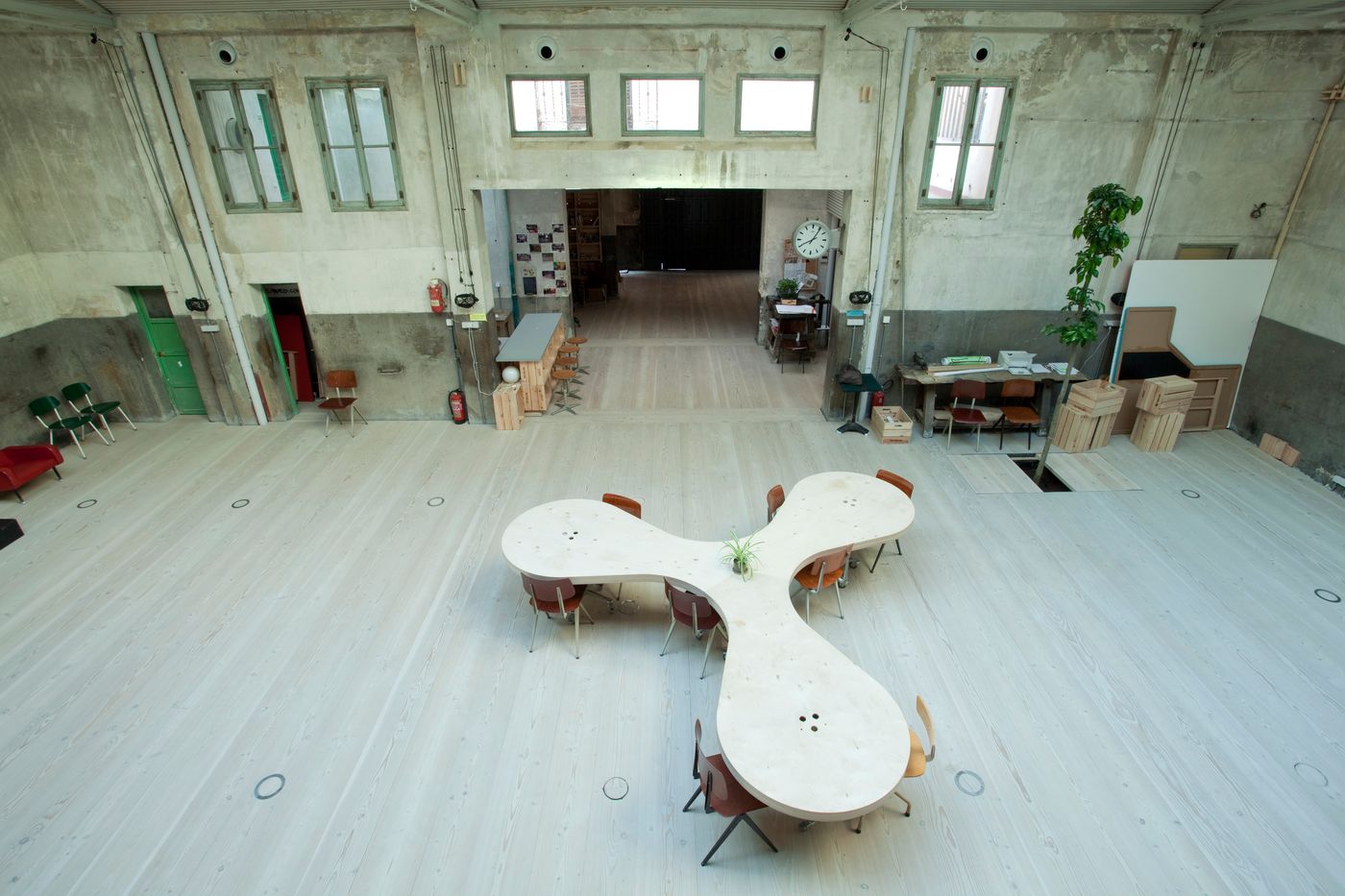
photo by Daniel Torrelló/ ayr+chitecture.
The hub is more than just a shared workspace; it is a dynamic gathering place for social and cultural activities within the neighborhood. This multifunctional space stands as a testament to creative reuse, environmental responsibility, and the enduring spirit of Madrid.
